A dripping kitchen faucet can be more than just an annoyance—it’s a waste of water and potentially a sign of underlying issues. Before calling a plumber to address that persistent drip, drip, drip, use this guide to single-handle kitchen faucets to diagnose the cause and potentially fix it yourself.
The Parts of a Single-Handle Faucet
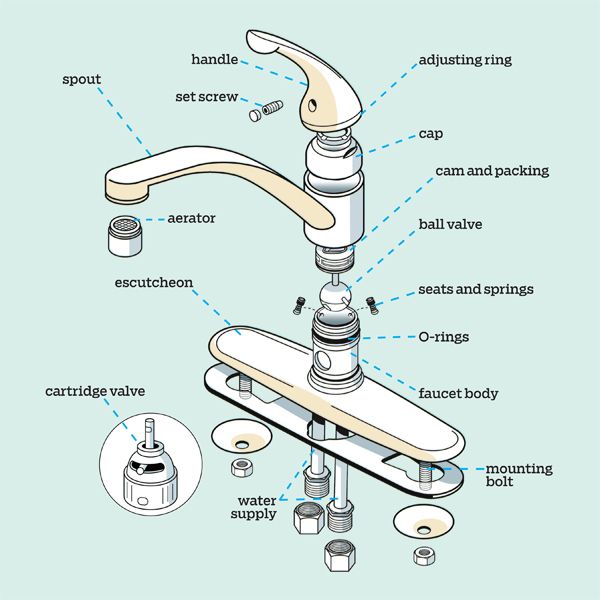
Spout
If your faucet is dripping from the spout, the issue likely lies with the internal components, but you can also check the spout itself for damage. Regular inspection and maintenance of the spout can help identify and resolve issues before they escalate.
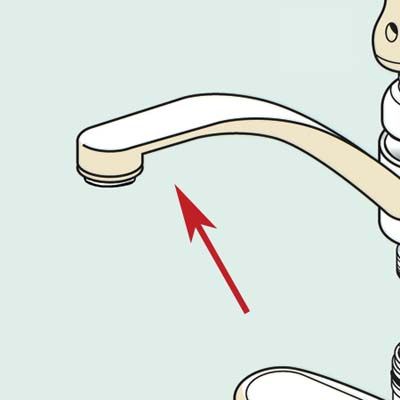
To address a dripping spout, do the following:
- Check for mineral buildup, which can prevent proper sealing.
- Inspect the valve seats for wear or damage.
- Consider replacing the entire ball-valve assembly if the problem persists.
- Ensure there are no cracks or deformities in the spout itself.
Handle and Set Screw
The handle is your primary point of interaction with the faucet, controlling both water flow and temperature. Any stiffness or difficulty moving the handle may indicate the need for some adjustments.
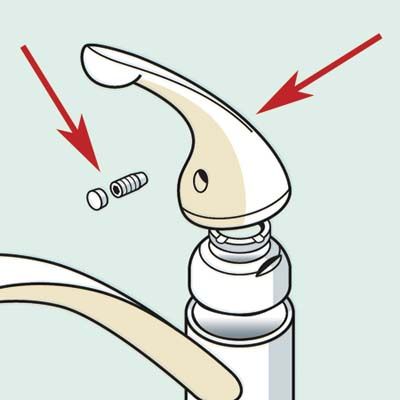
To improve handle function, do the following:
- Locate the set screw, typically hidden under a decorative cap.
- Loosen the set screw using an Allen wrench.
- Remove the handle to access the adjusting ring.
- Slightly loosen the adjusting ring to allow for smoother movement.
- Reassemble the handle, ensuring it’s not too tight or loose.
- Apply a small amount of plumber’s grease to moving parts for smoother operation.
Cap, Cam, and Packing
These components play a vital role in the faucet’s operation and water control. They ensure that water flows correctly within the faucet and does not leak around the handle area.
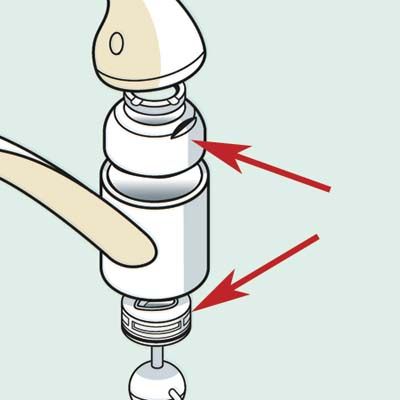
To check and maintain the cap, cam, and packing:
- Hold the ball valve firmly against the seats.
- If water leaks from the handle, consider replacing these components.
- Be cautious when loosening the cap—if the cam turns simultaneously, stop immediately to avoid damaging the supply pipes.
- Inspect the packing for any signs of wear or compression and replace if needed.
To reiterate, if the cam (bottom arrow on the diagram above) turns when you’re loosening the cap (top arrow), stop to avoid breaking the supply pipes and consult a professional plumber.
Ball Valve
The ball valve is the heart of your single-handle faucet, regulating both water flow and temperature. A malfunctioning ball valve often results in a dripping spout.
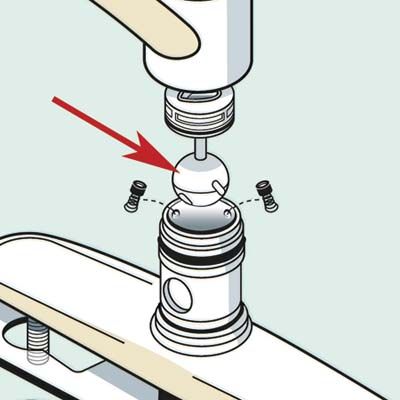
To address ball valve issues:
- Remove the valve carefully.
- Soak it in white vinegar for several hours to remove mineral deposits.
- Inspect the valve for wear, roughness, or damage.
- Replace the ball valve if it shows signs of significant wear or damage.
- Ensure the new valve is securely installed and tested for proper function.
Seats, Springs, and Faucet Body
These components work together to create a watertight seal between the ball valve and the faucet body. When they wear out, leaks can occur even if the ball valve is in good condition.
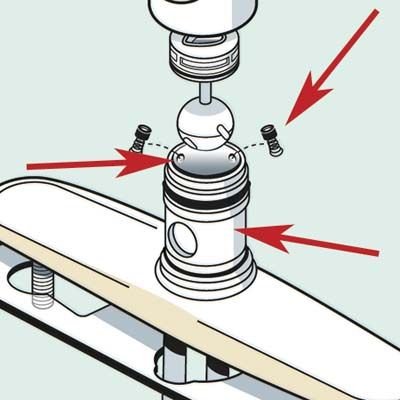
To replace the seats and springs:
- Remove the old seats (left arrow in diagram above) and springs (right top arrow) carefully.
- Clean the faucet body thoroughly to remove any debris.
- Install new seats and springs, ensuring they’re properly aligned.
- Test the faucet to ensure the leak has been resolved.
- Lubricate the seats and springs slightly for smoother operation.
O-rings
O-rings seal the base of the spout to the faucet body, preventing water from leaking around the spout’s base. Over time, these rings can dry out, crack, or become compressed, leading to leaks.
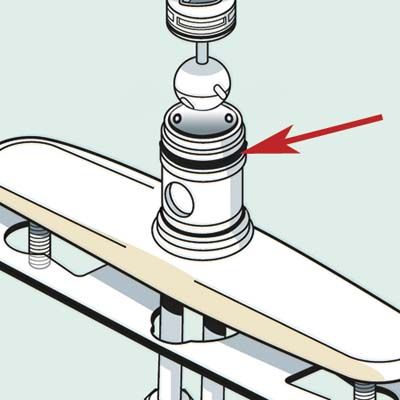
To address O-ring issues:
- Remove the spout to access the O-rings.
- Inspect the O-rings for signs of wear or damage.
- Apply plumber’s grease to the O-rings to improve their seal and longevity.
- If necessary, replace the O-rings with new ones of the same size and material.
- Ensure the O-rings are seated correctly before reassembling the faucet.
Cartridge Valve
Many newer faucets use a cartridge valve instead of a ball valve. This self-contained unit simplifies the faucet’s internal workings but requires a different approach to maintenance and repair.

When dealing with cartridge valves:
- For handle leaks, try replacing the seals or O-rings within the cartridge.
- If the spout is leaking, you may need to replace the entire cartridge.
- Clean the cartridge and surrounding areas regularly to prevent buildup and ensure smooth function.
Importantly, after repairing or replacing a cartridge valve, leave the handle turned on before reopening the water supply to allow trapped air to escape. Otherwise, enough pressure could build up in the system to crack the valve’s disks.
Escutcheon, Water Supply Lines, and Mounting Bolt
These components secure your faucet to the sink and connect it to your home’s water supply. Issues here can lead to leaks underneath your sink or a loose faucet.
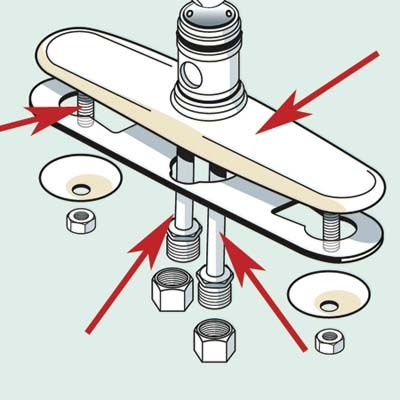
To maintain these parts:
- Check the escutcheon (top right arrow in diagram above) for signs of water infiltration or looseness.
- Reseal with silicone caulk if necessary.
- Tighten mounting bolts (top left arrow) to ensure the faucet is secure.
- Inspect water supply lines (bottom arrows) regularly for signs of wear or corrosion.
- Replace worn or damaged supply lines to prevent leaks.
Aerator
The aerator reduces water flow and prevents splashing, contributing to both water conservation and user comfort. A clogged aerator can significantly reduce water pressure, making it difficult to use the faucet efficiently.
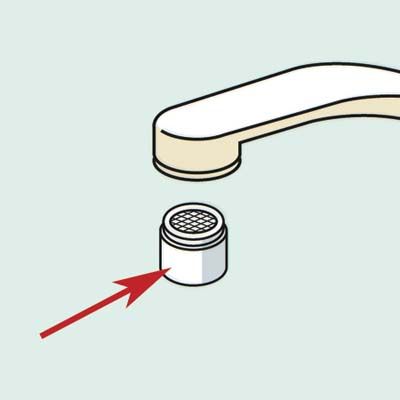
To maintain your aerator:
- Unscrew the aerator from the faucet spout.
- Disassemble the aerator carefully, noting the order of components.
- Scrub all parts with an old toothbrush to remove debris.
- Soak components in white vinegar to dissolve mineral deposits.
- Rinse thoroughly and reassemble before reattaching to the faucet.
- Check the aerator for wear or damage and replace if necessary.
Our Conclusion
Understanding your kitchen faucet’s anatomy empowers you to handle common issues and maintain its basic functions. As with any appliance or device, regular cleaning and maintenance can help keep your faucet working longer, so we recommend taking a look at the first sign of a problem.
